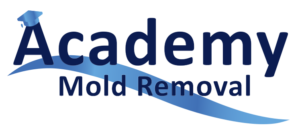Expert Tips on How to Remove Mold from Bathroom Ceiling Effectively
September 21, 2024How to Remove Mold from Bathroom Ceiling: Best Products and Techniques
September 21, 2024Mold on your bathroom ceiling can be a common problem, especially in humid environments. While it’s essential to remove the mold for health and aesthetic reasons, you also want to ensure that your ceiling’s paint remains intact. This article will guide you on how to remove mold from bathroom ceiling without damaging the paint, using safe and effective methods.
Understanding the Risks
Before you start, it’s crucial to recognize that using harsh chemicals can strip paint or cause discoloration. Therefore, it’s important to choose gentle cleaning solutions and techniques that effectively tackle mold without harming your ceiling.
Step-by-Step Guide
1. Assess the Situation
Start by evaluating the extent of the mold growth. If the affected area is small (less than 10 square feet), you can likely handle it yourself. For larger infestations or if you suspect toxic mold, consider hiring a professional.
2. Gather Your Supplies
To ensure a safe and effective mold removal process, gather the following supplies:
- Protective gear (gloves, mask, goggles)
- Spray bottle
- Soft scrub brush or sponge
- Mild cleaning solution (like white vinegar or a gentle dish soap)
- Water
- Bucket
- Clean cloths or paper towels
3. Use White Vinegar
White vinegar is a natural antifungal agent that can help remove mold effectively without damaging your paint. Here’s how to remove mold from bathroom ceiling without damaging the paint using vinegar:
Steps:
- Fill a spray bottle with undiluted white vinegar.
- Spray the vinegar directly onto the moldy area of the ceiling. Make sure to saturate the mold, but avoid oversaturating the paint.
- Let it sit for about an hour to allow the vinegar to penetrate and kill the mold.
- Using a soft scrub brush or sponge, gently scrub the moldy area. Be careful not to scrub too hard, as this can damage the paint.
- Wipe the area with a clean, damp cloth to remove any residual vinegar and mold.
4. Dish Soap and Water Solution
For more stubborn mold, you can use a mixture of mild dish soap and water. This solution is less abrasive than bleach and can effectively remove mold while being gentle on paint.
Steps:
- In a bucket, mix a few drops of mild dish soap with warm water.
- Dip a soft sponge into the soapy water and wring it out to avoid excess moisture.
- Gently dab the sponge on the moldy area, applying light pressure to lift the mold without damaging the paint.
- Rinse the sponge frequently in the soapy water to avoid spreading the mold.
- Once the mold is removed, wipe the area with a damp cloth to remove soap residue, and then dry it with a clean towel.
5. Rinse and Dry
After cleaning, it’s crucial to rinse the area to remove any remaining cleaning solution. Use a damp cloth to wipe down the ceiling, then dry it thoroughly to prevent new mold growth. Ensure good ventilation during this process.
6. Prevent Future Mold Growth
To avoid dealing with mold again, consider these preventive measures:
- Improve ventilation: Use an exhaust fan or open windows to reduce humidity.
- Regular cleaning: Wipe down the ceiling and walls periodically to remove moisture.
- Check for leaks: Ensure there are no plumbing issues causing excess moisture.
Conclusion
Removing mold from your bathroom ceiling doesn’t have to damage the paint if you use the right techniques and cleaning solutions. By following these steps on how to remove mold from bathroom ceiling without damaging the paint, you can maintain a clean and healthy bathroom while preserving its appearance.
